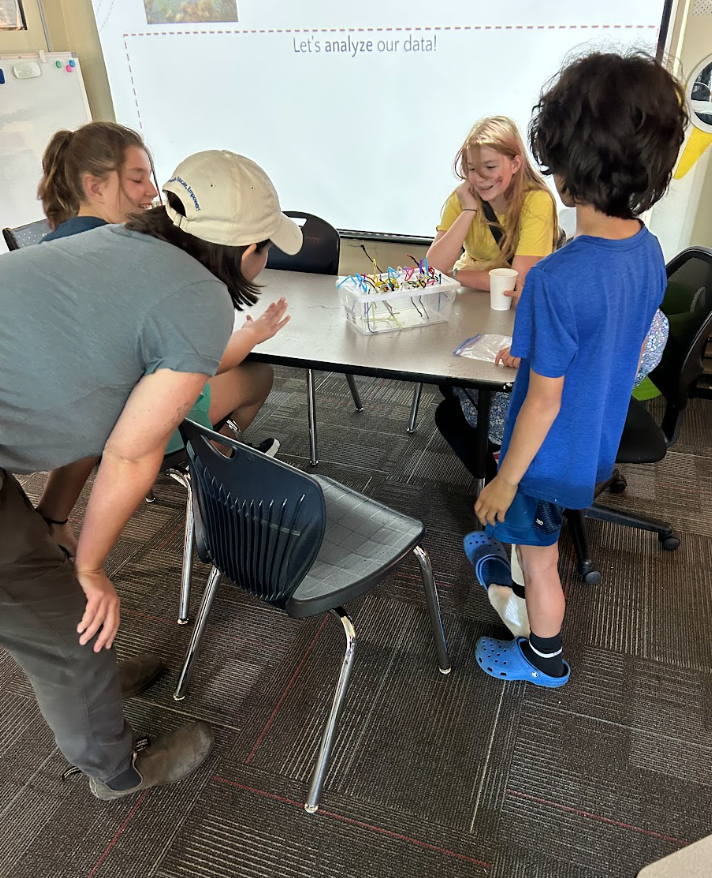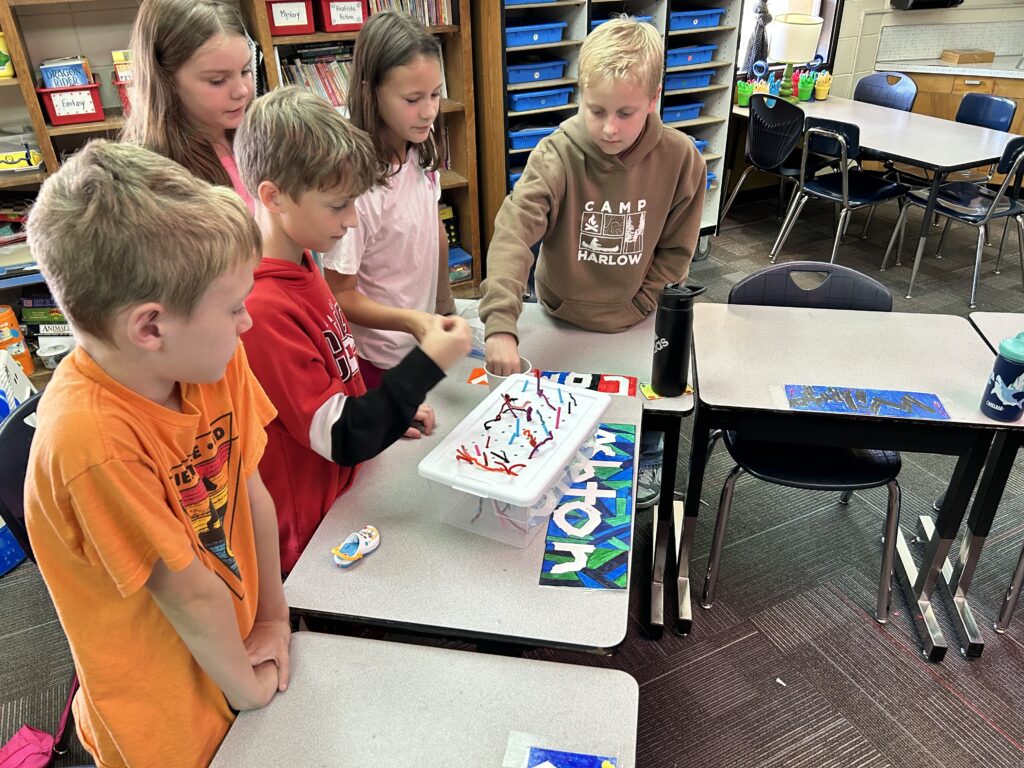Classroom Programs
WREN offers in-class, hands-on programs for K-12 schools in and around the greater Eugene area. Each lesson highlights different components of the West Eugene Wetlands and the important role they play in our watershed. Below you will find descriptions of all of our programs. Each lesson has an intended grade band listed, but most programs can be modified to fit the needs of younger or older learners with advanced notice. Unless otherwise noted, each lesson is intended to be between 45 minutes to one hour in length and provides your students with NGSS aligned learning experiences designed to connect them to their local wetland ecosystem.
Program cost is $35 per classroom for the first program and $30 per classroom for each additional program. Financial assistance is available for Title 1 schools. No request will be accepted if submitted within 2 weeks of the program date.
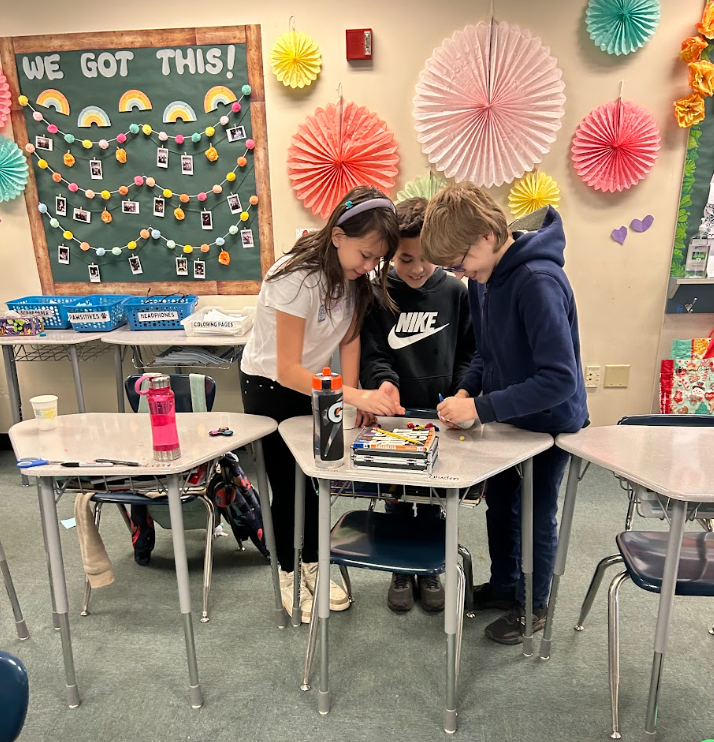
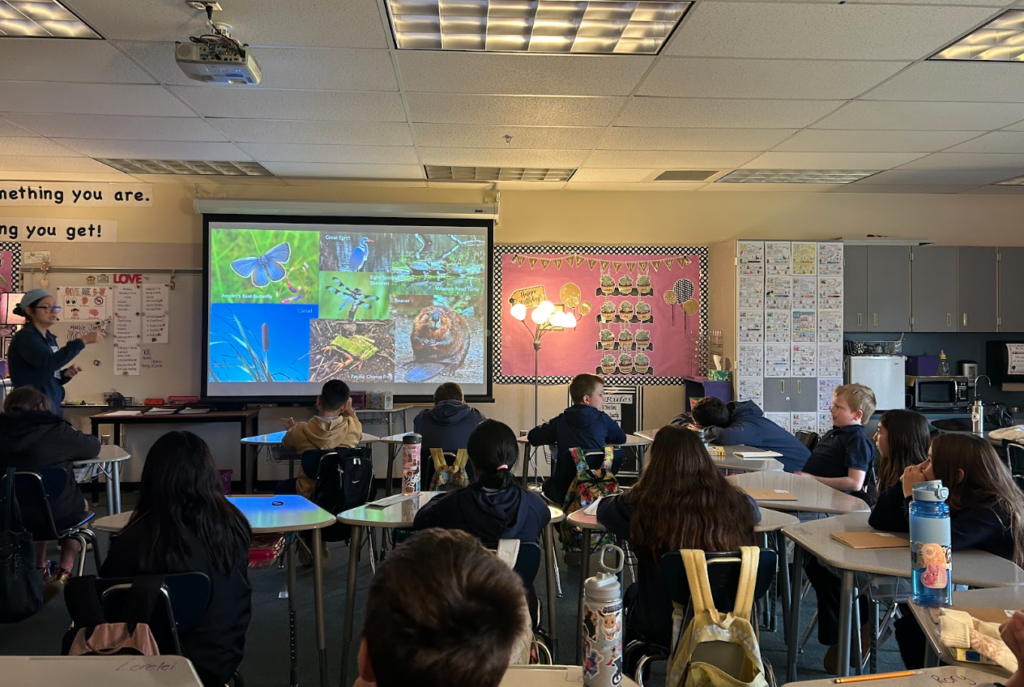
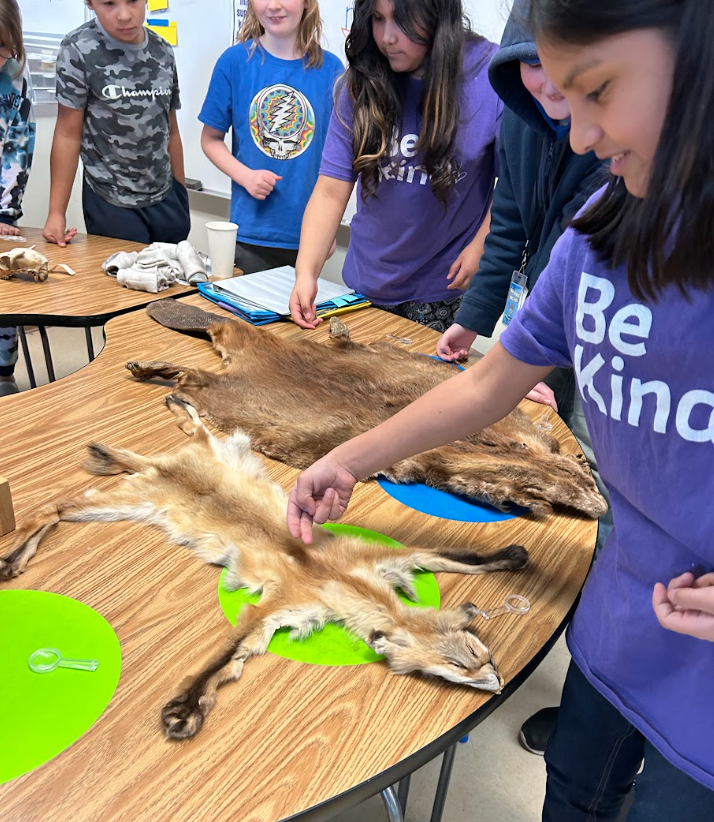
Elementary Classroom Programs:
Program cost is $35 per classroom for the first program and $30 per classroom for each additional program. Financial assistance is available for Title 1 schools. No request will be accepted if submitted within 2 weeks of the program date. Request your program HERE.
What is a Wetland?
Grades K-5
Description: WREN brings the wetlands to your classroom! In this lesson, we highlight the main components of the wetland ecosystem and the plants and animals that call them home. Students will have the opportunity to interact with preserved specimens of wetland species and engage in a hands-on modeling activity.
NGSS Standards Addressed:
K-LS1-1 , Use observations to describe patterns in the natural world to answer scientific questions
K-ESS3-3, Communicate solutions that will reduce the impact of humans on the land, water, air, and/or other living things in the local environment
2-LS4-1, Observe plants and animals to compare the diversity of life in different habitats
3-LS4-3 , Construct an argument that in a particular habitat some organisms can survive well, some survive less well, and some cannot survive at all
4-LS1-1 , Plants and animals have both internal and external structures that serve various functions in growth, survival, behavior, and reproduction.
Powerful Pollinators
Grades K-5
Description: Did you know there is an endangered pollinator right here in Eugene? Students will learn about the many types of pollinators that can be found in the Willamette Valley, including the endangered Fender’s Blue Butterfly and the threatened Kincaid’s Lupine. Students will have the opportunity to closely observe pollinators, play pollinator-related games, and discuss how best to conserve these important creatures! For one of the activity options, it is recommended classes have an open area like a gym, shared hallway, or outdoor space to accommodate the activity.
NGSS Standards Addressed:
K-LS1-1, Use observations to describe patterns of what plants and animals (including humans) need to survive
2-LS4-1, Make observations of plants and animals to compare the diversity of life in different habitats.
3-LS3-2, Use evidence to support the explanation that traits can be influenced by the environment.
3-LS4-2, Use evidence to construct an explanation for how the variations in characteristics among individuals of the same species may provide advantages in surviving, finding mates, and reproducing
3-LS4-3, Construct an argument with evidence that in a particular habitat some organisms can survive well, some survive less well, and some cannot survive at all.
4-LS1-1 , Construct an argument that plants and animals have internal and external structures that function to support survival, growth, behavior, and reproduction
Life Cycles
Grades K-5
Description: All living things grow and change! In this lesson, students will learn about the life cycles of wetland animals through interactive games. They’ll have a chance to think critically about the challenges of surviving in the wetland habitat and an opportunity to compare and contrast how different living things grow. For one of the activity options, it is recommended classes have an open area like a gym, shared hallway, or outdoor space to accommodate the activity.
NGSS Standards Addressed:
K-LS1-1, Use observations to describe patterns of what plants and animals need to survive
K-ESS2-2, Construct an argument supported by evidence for how plants and animals can change their environment to meet their needs
1-LS3-1, Make observations to construct an evidence-based account that young plants and animals are like, but not exactly like, their parents
2-LS4-1, Make observations of plants and animals to compare the diversity of life in different habitats
3-LS1-1, Develop models to describe that organisms have unique and diverse life cycles but all have common birth, growth, reproduction, and death
3-LS3-2, Use evidence to support the explanation that traits can be influenced by the environment4-LS1-1, Construct an argument that plants and animals have internal and external structures that function to support survival, growth, behavior, and reproduction
5-LS2-1, Develop a model to describe the movement of matter among plants, animals, decomposers, and the environment
Structure and FUNction
Grades K-5
Description: In this lesson, students will learn about how living things are specially adapted to survive in their ecosystem. They’ll have an opportunity to observe preserved specimens of wild animals, think critically about how skull structure contributes to survival, and participate in games and art activities that will leave them with an understanding of and excitement about animal anatomy! For one of the activity options, it is recommended classes have an open area like a gym, shared hallway, or outdoor space to accommodate the activity.
NGSS Standards Addressed:
K-LS1-1, Use observations to describe patterns of what plants and animals (including humans) need to survive
K-2-ETS1-2, Develop a simple sketch, drawing, or physical model to illustrate how the shape of an object helps it function as needed to solve a given problem
1-LS3-1, Make observations to construct an evidence-based account that young p;lants and animals are like, but not exactly like, their parents
2-LS4-1 , Make observations of plants and animals to compare the diversity of life in different habitats
3-LS3-1, Analyze and interpret data to provide evidence that plants and animals have traits inherited from parents
3-LS3-2, Use evidence to support the explanation that traits can be influenced by the environment
4–LS1-1, Construct an argument that plants and animals have internal and external structures that function to support survival, growth, behavior, and reproduction
Migration Madness
Grades 3-6
Description: Migration is tough work for birds of all shapes and sizes! In this lesson, students learn to identify local migrant birds before taking part in a migration game. Students analyze the threats and benefits migrant birds face on their long journeys, and the various ways that humans can help. Students then design their own habitat for migrant birds. It is recommended classes have an open area like a gym, shared hallway, or outdoor space to accommodate the migration activity.
NGSS Standards Addressed:
3-LS4-3, Construct an argument with evidence that in a particular habitat some organisms can survive well, some survive less well, and some cannot survive at all
3-LS4-4, Make a claim about the merit of a solution to a problem caused when the environment changes and the types of plants and animals that live there may change
5-PS3-1, Use models to describe that energy in animals’ food was once energy from the sun
5-LS2-1, Develop a model to describe the movement of matter among plants, decomposers, and the environment
MS-LS1-4, Use argument based on empirical evidence and scientific reasoning to support an explanation for how characteristic animal behaviors and specialized plant structures affect the probability of successful reproduction of animals and plants respectively.
MS-LS2-1 , Analyze and interpret data to provide evidence for the effects of resource availability on organisms and populations of organisms in an ecosystem.
Middle School Classroom Programs:
Program cost is $35 for the first program and $30 for each additional program on the same day. Assistance is available for Title 1 schools. Request your program HERE.
Wetlands and Watersheds
Grades 6-8
Description: We all live downriver! In this lesson, students will learn about the watersheds that support the Willamette Valley. Students model various watershed scenarios to gain an understanding into flow rate, flooding, and pollution. Through this activity, students will analyze their watershed data, propose ways we can further modify our scientific model, and brainstorm together how we can support the watershed for all the living things that rely on it!
NGSS Standards Addressed:
MS-LS2.A., Interdependent Relationships in Ecosystems
MS-LS2.B, Cycle of Matter and Energy Transfer in Ecosystems
MS-LS2.C , Ecosystem Dynamics, Functioning & Resilience
MS-ESS2-4, Develop a model to describe the cycling of water through Earth’s systems driven by energy from the sun and the force of gravity
MS-ESS3-1, Construct a scientific explanation based on evidence for how the uneven distributions of Earth’s mineral, energy, and groundwater resources are the result of past and current geoscience processes
MS-ESS2.C, The Roles of Water in Earth’s Surface Processes
MS-ESS3., A Natural Resources
